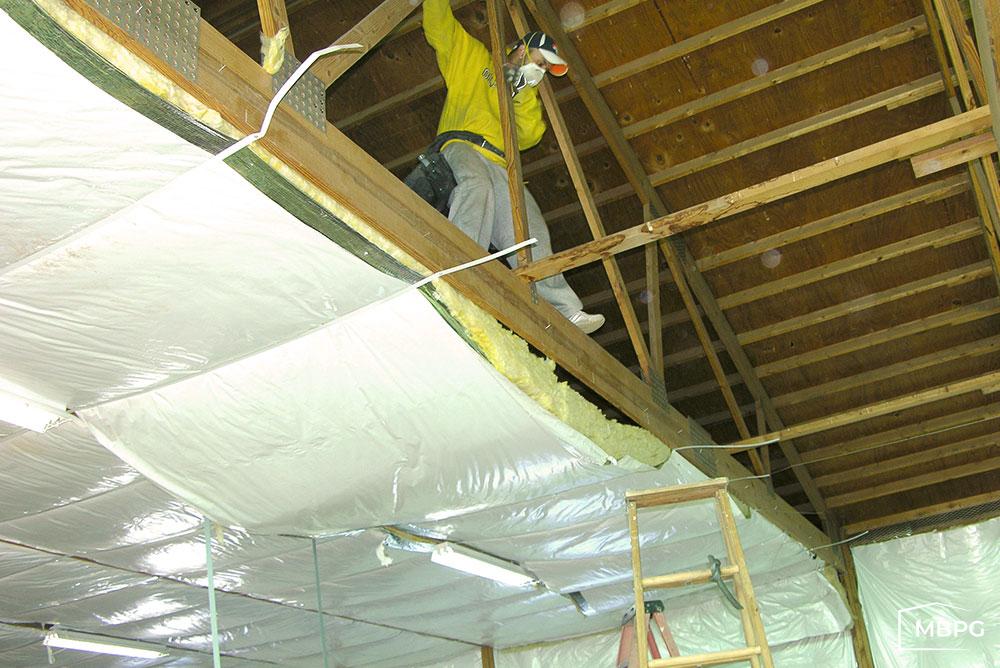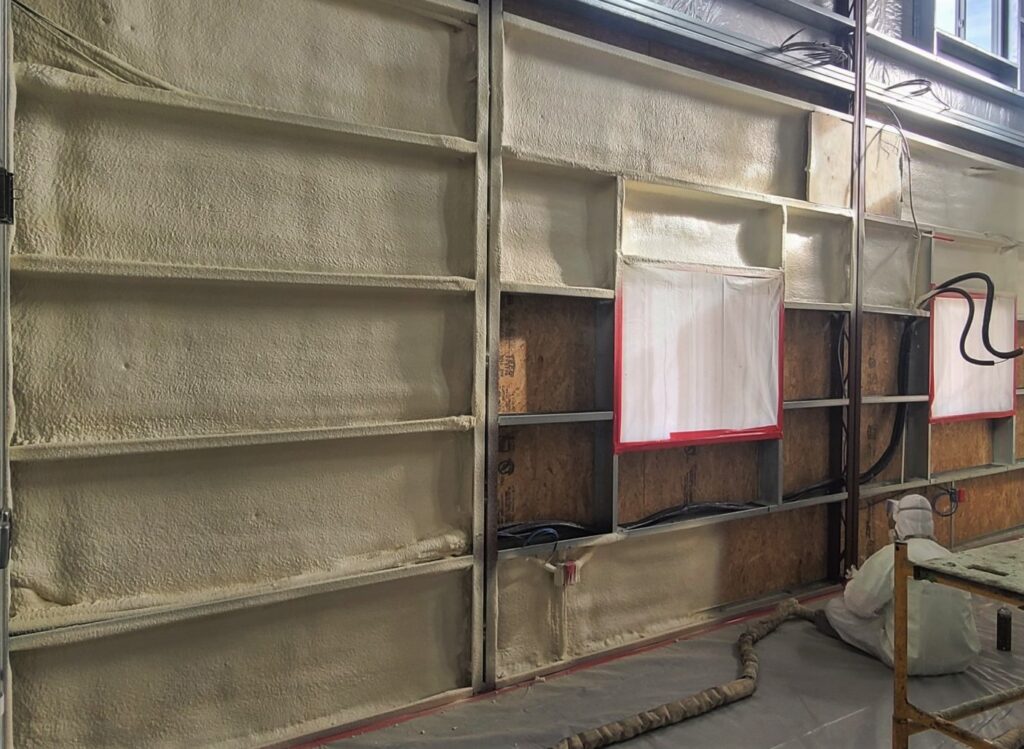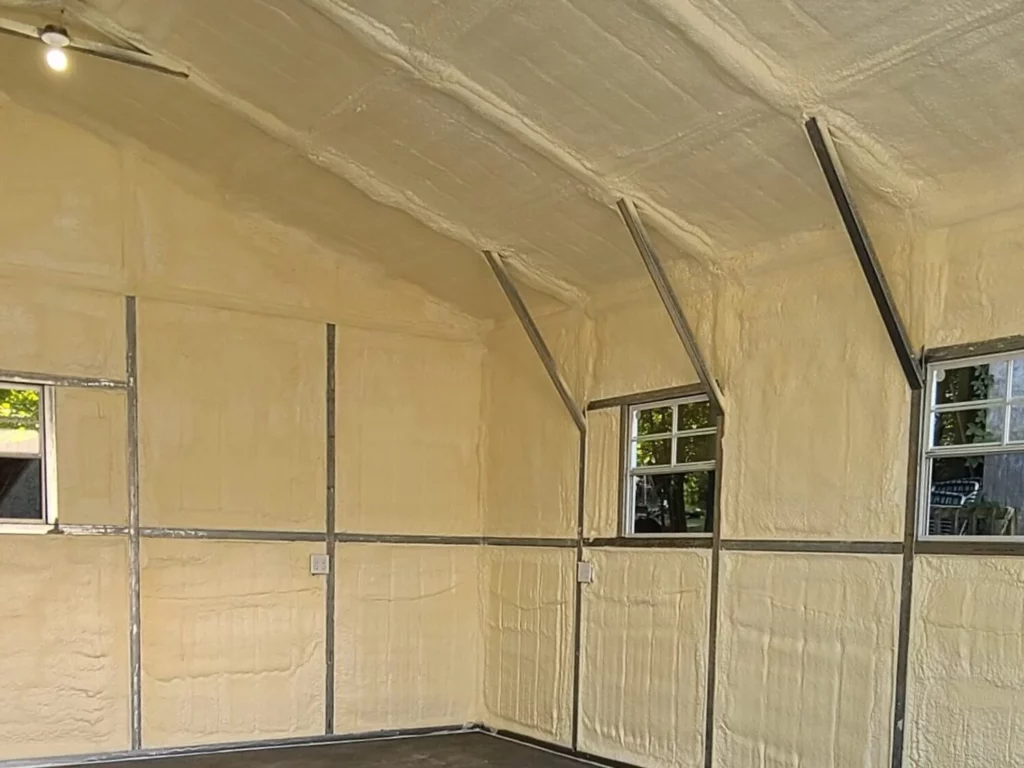Turning your metal pole barn into a cozy, energy-efficient space? Insulation is the key. Whether it’s for work, storage, or living, the right insulation keeps temps steady and bills low.
This guide walks you through the best insulation methods and tips to help you get the job done right.
How to insulate a metal pole barn?
Insulate a metal pole barn by installing foam board, spray foam, or batt insulation between the posts and the walls. Consider reflective insulation for a more energy-efficient solution.
Key Takeaways
- Insulating a metal pole barn helps regulate temperature and reduces energy bills.
- Popular insulation materials for pole barns include spray foam, fiberglass, and rigid foam board.
- Proper installation and sealing are crucial for achieving optimal performance from your insulation.
Why Should You Insulate a Metal Pole Barn?

Insulating your metal pole barn offers several benefits, particularly if you plan to use the space for more than just storage. Metal buildings tend to have poor natural insulation, which can lead to temperature fluctuations, condensation, and increased energy costs.
Insulating the barn helps to address these issues and makes the space more comfortable year-round.
Temperature Regulation
Without insulation, metal barns can get extremely hot in the summer and cold in the winter. Insulation helps maintain a stable temperature inside, keeping it cooler in the summer and warmer in the winter. This is especially important if you’re using the barn as a living space or workspace.
Energy Efficiency
Insulating the barn helps cut energy bills by reducing how much heating or cooling is needed. When you understand the difference between pole barn and metal building, you’ll see how proper insulation in a metal structure minimises heat loss or gain, letting your systems run far more efficiently.
Condensation Prevention
Metal surfaces are prone to condensation, which can lead to moisture buildup, mold, and mildew. Insulation acts as a barrier against moisture, preventing it from collecting on the inside of the walls.
Different Insulation Options for a Metal Pole Barn
There are several insulation materials to choose from, each with its own set of advantages. The right material for your pole barn will depend on your budget, climate, and how you intend to use the space.
Spray Foam Insulation
Spray foam insulation is one of the most effective options for insulating a metal pole barn. It expands as it’s applied, filling in gaps and cracks to provide a solid barrier. Spray foam is ideal for areas where other materials may not reach, such as tight corners or hard-to-reach spots.
- Advantages: Excellent at sealing gaps, provides high R-value (thermal resistance), prevents moisture buildup, and is energy-efficient.
- Disadvantages: Higher upfront cost, requires professional installation, and can be more difficult to remove if you ever need to change it.
Fiberglass Insulation
Fiberglass insulation is a popular and cost-effective option for insulating metal buildings. It’s available in rolls or batt form and is typically installed between the studs, posts, and rafters of the barn.
- Advantages: Affordable, easy to install (DIY-friendly), and widely available.
- Disadvantages: May not be as effective in areas with high moisture, requires vapor barriers to prevent moisture buildup, and can irritate the skin during installation.
Rigid Foam Board Insulation
Rigid foam boards, like polystyrene or polyurethane, are solid panels with excellent insulation value. Lightweight and easy to cut, they can be installed directly against walls or ceilings, making them a practical choice when installing metal ceiling panels in pole barn projects.
- Advantages: High R-value, moisture-resistant, easy to install, and lightweight.
- Disadvantages: More expensive than fiberglass, and the seams must be properly sealed to avoid heat loss.
Reflective or Radiant Barrier Insulation
Radiant barrier insulation is a reflective material that works by reducing heat transfer. It’s installed on the interior walls or ceiling of the barn, reflecting heat away during the summer and trapping it inside during the winter.
- Advantages: Effective for controlling temperature in hot climates, lightweight, and easy to install.
- Disadvantages: Less effective in very cold climates and may not provide as much overall insulation as other materials.
Step-by-Step Guide to Insulating Your Metal Pole Barn

Follow these steps to properly insulate your metal pole barn and ensure maximum energy efficiency and comfort.
Step 1: Evaluate Your Barn’s Needs
Before starting the insulation process, assess the barn’s purpose and the local climate. If you plan to use the barn year-round, you’ll need more insulation than if it’s just for seasonal storage.
Consider the level of insulation you need based on whether the space will be used as a workshop, storage, or living area.
Step 2: Choose the Right Insulation Material
Based on your needs and budget, select the insulation material that works best for your situation.
For example, if you’re in a particularly cold climate, spray foam or fiberglass with a vapor barrier might be ideal. If you want a budget-friendly option and live in a mild climate, fiberglass insulation could be sufficient.
Step 3: Prepare the Barn
Start by clearing the interior of the barn and removing any debris. Check for any damage to the walls or roof that may need repairs before installing insulation.
If you’re installing fiberglass or foam board, make sure the studs and rafters are in good condition and free of moisture.
Frequently Asked Questions
1. How much does it cost to insulate a metal pole barn?
The cost of insulating a metal pole barn varies based on the material, size of the barn, and installation method. On average, the cost can range from $1,500 to $6,000 or more, depending on the insulation type.
2. Can I install insulation in my pole barn myself?
Yes, many homeowners can install insulation themselves, especially if they are using fiberglass or foam board. However, for spray foam installation, it’s recommended to hire a professional for proper application.
3. What’s the best insulation for a pole barn in a cold climate?
In cold climates, spray foam or fiberglass insulation with a vapor barrier is recommended, as they provide better thermal resistance and moisture control.
Conclusion
Insulating your metal pole barn is a valuable investment that improves energy efficiency, comfort, and long-term durability.
By choosing the right insulation material and following proper installation techniques, you can create a temperature-controlled environment that works for your needs.
Whether you’re using your barn as a workshop, storage space, or living area, proper insulation ensures that it remains functional and comfortable year-round.

